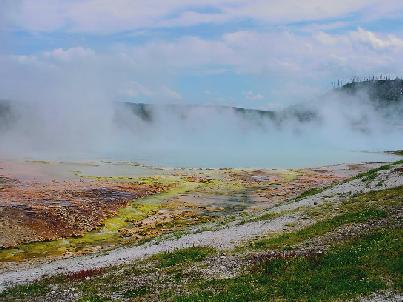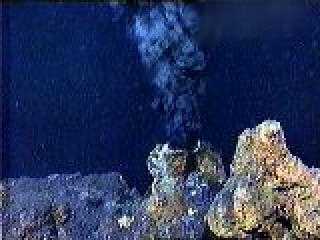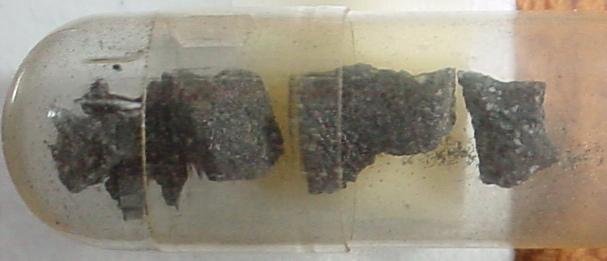Extremeophiles (and a bit of Astrobiology)
| Definition: A term applied to
bacteria that inhabit extreme environments such as hot springs, saline flats, undersea vents, and of course caves. These one-celled life forms show
remarkable adaptations to not only survive but thrive in places where conditions would be prohibitive for most
organic life. |
In other areas of the website we've looked at several extremeophile environments including
hot springs such as these at Yellowstone, the place most people think of first for extremeophiles.
Here the bright colored bands host extremeophile cyanobacteria. |
 |

Image courtesy Wood Hole Oceanographic Institute |
Another classic extremeophile environment is deep sea vents where hot water rises
from "black smokers." |
|
Perhaps the most extreme of all these environments is that of outer space. The picture
on the left shows fragments of the Murchison meteorite which fell in Australia in 1969. This meteorite is a member
of the Carbonaceous Chondrite class meaning that it is a "stony" meteorite containing carbon. Chemical
analysis established that the Murchison contains amino acids - the building blocks of life - as well as precursors
to DNA and RNA.
For the original article see Cooper and Cronin, 1995 in the references section |
 |
|
Follow this link to learn more
about cave dwelling extremeophiles !
Copyright (c) 2004-5 by R. Mark Maslyn
Last Updated October 6, 2005
[
